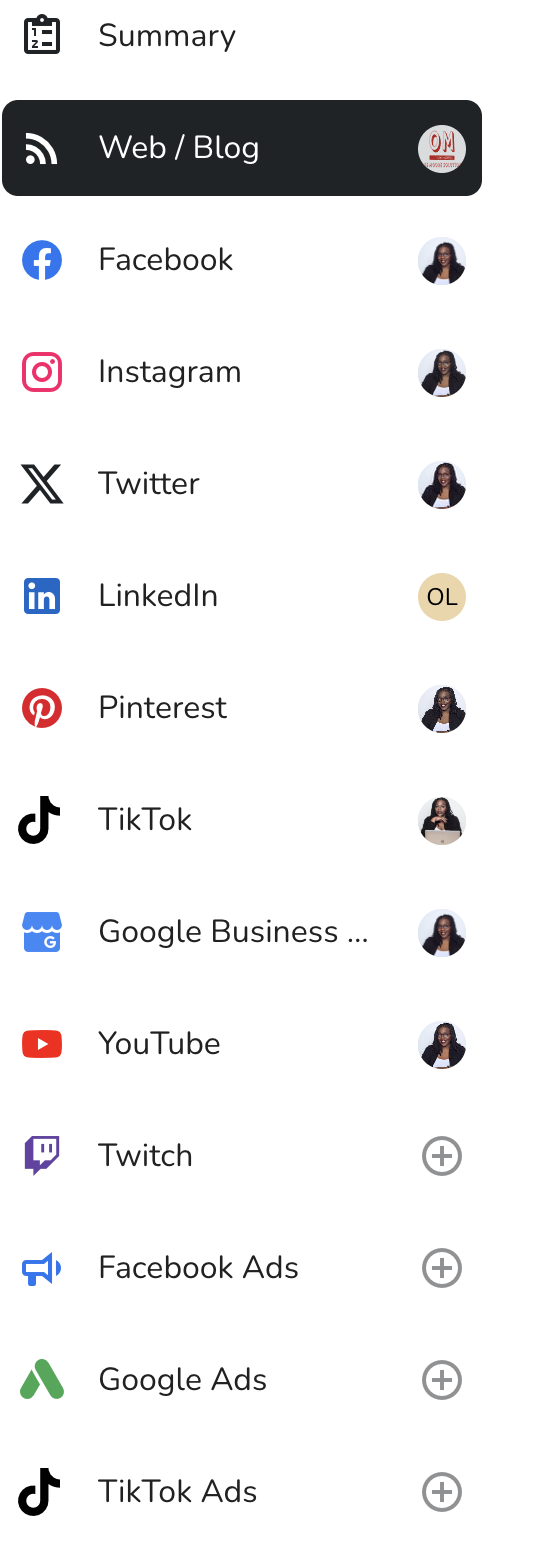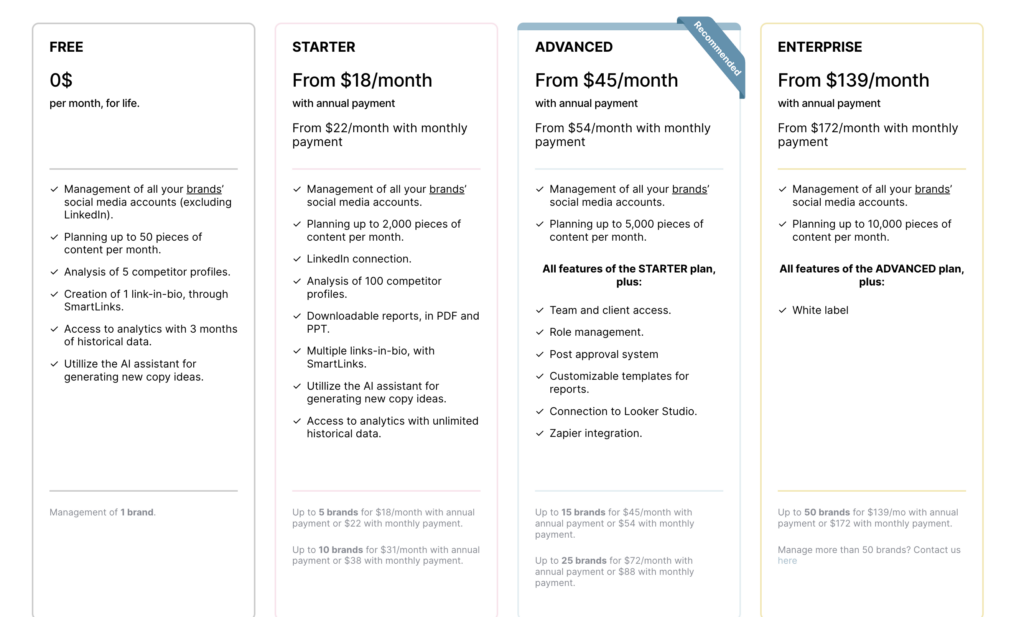
by Olivia Moore | May 7, 2024 | Web Solutions
Choosing the right software or tools for your business can feel like a big decision, but it doesn’t have to be overwhelming! With the right approach, you can find a solution that meets your needs and helps your business thrive. In this post, I’ll break down the process into 10 simple steps to guide you through the decision-making process.
- Identify Your Needs: Start by identifying the specific challenges your business faces and the tasks you need help with. Make a list of essential features and functionalities that will address these needs.
- Set Your Budget: Determine how much you’re willing to invest in software. Consider both upfront costs and ongoing subscription fees to ensure the software aligns with your financial resources.
- Research Options: Explore different software options available in the market. Read reviews, compare features, and take advantage of free trials or demos to get a feel for each option.
- Consider Scalability: Think about the future growth of your business and choose software that can grow with you. Avoid outgrowing your solution too quickly and having to switch to something else.
- Check Integration Compatibility: Ensure compatibility with other software or tools you’re already using. Look for seamless integration to streamline workflows and data management.
- Seek Recommendations: Reach out to fellow business owners or industry peers for recommendations. Hearing firsthand experiences can provide valuable insights to inform your decision.
- Test Before Committing: Take advantage of free trials or demos offered by software providers. Use this opportunity to evaluate functionality, user interface, and overall suitability for your business needs.
- Evaluate Support and Training: Consider the level of customer support and training resources provided by the software vendor. Accessible support and training materials can facilitate successful implementation and usage.
- Make a Decision: Weigh the pros and cons of each option against your criteria and make a decision that aligns with your business needs and goals.
- Start Small and Learn: Implement the chosen software gradually and explore additional features as you become more comfortable. Monitor performance, gather feedback, and continue to optimize your business processes.
Conclusion:
Choosing the right software for your business doesn’t have to be daunting. By following these 10 simple steps, you can make an informed decision and select a solution that empowers your business growth and success.

by Olivia Moore | Mar 10, 2024 | Social Media, Web Solutions
Juggling multiple social media accounts can feel like a never-ending circus act. What if there was a tool that could streamline your workflow, boost your engagement, and provide valuable insights – all in one place? Now you can. Say hello to Metricool, the social media manager’s secret weapon.
Here are 9 reasons why Metricool should be your go-to platform for conquering the social media landscape:
Manage All Your Accounts in One Dashboard
Metricool lets you connect all your major social media profiles. Just imagine being able to manage Facebook, Instagram, Twitter, LinkedIn and more. No more constantly logging in and out. You can schedule posts, respond to comments, and track performance from a single, unified dashboard.

Effortless Scheduling
Planning your social media content is key to consistency and success. Metricool’s scheduling feature allows you to create and queue up posts for all your platforms at once. What does this mean for you? No more scrambling to meet deadlines or last-minute posts. You can schedule your content for the optimal times and watch your engagement soar.

Powerful Analytics at Your Fingertips
Metricool goes beyond just scheduling. It provides analytics that gives you a clear picture of your social media performance. Track metrics like follower growth, engagement rates, and reach to understand what’s working and what’s not. Use these insights to refine your strategy and get the most out of your social media efforts.

Competitive Analysis Made Easy
Stay ahead of the curve by keeping an eye on your competitors. Metricool allows you to track their social media activity. You can see their most popular posts, audience demographics, and more. You can use this information to identify trends and opportunities to differentiate your brand.

Save Time and Effort with Bulk Publishing
Managing multiple social media accounts can be time-consuming. That’s why I love Metricool’s bulk publishing feature. It allows you to upload and schedule content for all your platforms at once. This saves you time and allows you to focus on other aspects of your social media strategy.

Respond to Comments and Messages Efficiently
Staying engaged with your audience is crucial for building relationships and fostering brand loyalty. Metricool allows you to manage all your comments and messages from a centralized location. This makes it easier to respond promptly and keep the conversation flowing.

Collaborate with Your Team Seamlessly
If you’re working with a team on social media marketing, Metricool streamlines collaboration. Assign tasks, share reports, and get everyone on the same page with user roles and permissions.
Affordable Pricing
Metricool offers a variety of pricing plans to suit different needs and budgets. There’s even a free plan that lets you get started with basic features.

Ready to Take Your Social Media Marketing to the Next Level?
Metricool is a powerful and versatile tool that can help you save time, improve efficiency, and achieve your social media marketing goals. So why not give it a try?

by Olivia Moore | Feb 8, 2024 | Web Solutions
Are you hearing more and more about ChatGPT but scratching your head in confusion? You’re not alone. I’m going to give you some clarity. Let’s break it down and see how this super dope AI tool can transform your brand, your tech game, and your glow-up.
Getting to Know ChatGPT:
ChatGPT is like your BFF with a Ph.D. in words, powered by some serious brainpower known as deep learning. It’s like having a digital twin who’s always ready to lend a hand, a word, or a whole paragraph whenever you need it.
How ChatGPT Gets Works:
Picture this: ChatGPT dives into a sea of text data, soaking up knowledge like a sponge at a spa day. It learns the patterns, the vibes, and the rhythm of the language, so when you toss out a question or a prompt, it comes back at you with a response.
What ChatGPT can do for you:
- Content Creation: Need a blog post, an article, or a catchy caption? ChatGPT’s got your back, helping you whip up content that keeps your audience coming back for more.
- Customer Connections: Say goodbye to long wait times and hello to instant support! ChatGPT can jump into your chatbox and chat up your customers, answering questions, solving problems, and making sure everyone leaves happy.
- Writing Wizardry: From emails to presentations, ChatGPT lends a helping hand, offering suggestions and tweaks to make your words pop and your message shine.
- Creative Spark: Stuck in a rut? ChatGPT can be your muse, tossing out ideas and inspiration like confetti at a party, sparking creativity, and fueling your hustle.
- Language Love: With ChatGPT’s translation skills, you can bridge the language gap and connect with customers and clients from all corners of the globe.
How ChatGPT Can Level Up Your Business:
- Work Smarter, Not Harder: ChatGPT takes care of the grunt work, leaving you free to focus on the big picture and make moves that matter.
- Nail Your Communication: With ChatGPT by your side, you can communicate like a boss, building relationships and sealing deals with style and flair.
- Unleash Your Creativity: Whether you’re a writer, a designer, or a coach with big dreams, ChatGPT can be your secret weapon, unlocking your creativity and helping you bring your vision to life.
- Stay Ahead of the Game: In a world that’s always changing, ChatGPT keeps you one step ahead, helping you adapt, evolve, and thrive in the fast-paced tech landscape.
Wrapping It Up:
So there you have it. ChatGPT is like having a tech-savvy assistant who’s always ready to lend a hand and help you get stuff done. Ready to take your hustle to the next level? Dive into the world of ChatGPT and let the magic begin!
And hey, if you’re ready to level up your ChatGPT game even further, why not schedule a 1-on-1 learning session with me? We’ll dive deep into the world of ChatGPT, unlock its full potential, and unleash your inner tech queen. Don’t miss out—book your session today and let’s make some magic happen!

by Olivia Moore | Jan 4, 2024 | Web Solutions
Juggling a solopreneur life is like spinning plates on a unicycle. You’re the CEO, the marketer, the accountant, the customer service rep, and everything in between. And let’s be honest, time is your most precious (and often scarce) resource.
But no worries, fellow solopreneurs! Technology is your friend. There are a ton of dope tools out there designed to streamline your workflow, automate tasks, and free up your precious minutes for what truly matters: growing your business and living your best life.
Here are 5 tech tools that every busy solopreneur should have in their arsenal:
1. Project Management Powerhouse: Trello
Tame the chaos with Trello’s intuitive task management platform. Create to-do lists, assign tasks, set deadlines, and track progress seamlessly. Collaborate with clients or team members, and get notified about updates and changes instantly. Trello keeps everyone on the same page, so you can focus on getting things done, not chasing down loose ends.
2. Content Creation Queen: Canva

Content marketing is crucial for solopreneurs, but creating visuals can be a time-consuming nightmare. Enter Canva, your one-stop shop for stunning social media graphics, blog post images, and even presentations. With a library of templates, drag-and-drop functionality, and tons of design elements, Canva lets you create professional-looking visuals even if you have zero design skills.
3. Social Media Superhero: Metricool
Managing multiple social media accounts can feel like a full-time job in itself. Metricool swoops in like Iron Man to the rescue, letting you schedule posts, track engagement, and analyze performance across all your platforms from one central hub.

Save hours on social media management and focus on building your online community.
4. Email Automation Guru: ConvertKit
Building and nurturing an email list is key to long-term success, but managing email campaigns can be a major pain point. ConvertKit simplifies the process with its user-friendly interface, drag-and-drop email builder, and powerful automation features. Schedule email sequences, segment your audience, and track results to stay connected with your subscribers and grow your email list on autopilot.
5. Time-Tracking Ninja: Toggl Track
Ever wonder where your time goes? Toggl Track is your answer. This simple time-tracking app lets you easily record your work hours on specific projects and tasks. Analyze your time usage, identify areas for improvement, and make sure you’re billing clients accurately. Toggl Track helps you stay productive and maximize your billable hours.
Bonus Tip: Don’t forget the power of integrations! Many of these tools connect with one another, allowing you to create automated workflows that save you even more time.
Remember, solopreneurs, you don’t have to go it alone. Embrace technology, utilize these amazing tools, and watch your productivity soar! And with more time on your hands, you can finally focus on the things that truly matter, like taking a well-deserved vacation or setting aside some time to binge-watch your favorite shows

by Olivia Moore | Nov 16, 2023 | Web Design, Web Solutions
Introduction
If you’re a new solopreneur, creating a website is one of the most important things you can do. A website is your home base on the internet, and it’s where you can control your message and tell the world about your business. In this blog post, we’ll share six tips to keep in mind before you create a website that will help you succeed as a solopreneur.
1. Know your why
Before you start creating your website, take some time to think about why you’re creating it. What do you want your website to achieve? Do you want to generate leads? Sell products or services? Build relationships with customers?
Once you know your goals, you can start to develop a strategy for your website. This will include things like creating content, optimizing your website for search engines, and promoting your website on social media.
2. Know your stuff
What are you offering? It’s not just what you sell; it’s how you tell people about it. Be clear 🙂
Your website should be clear and concise about what you offer. Visitors should be able to understand what you do and why they should choose you over your competitors.
3. Find your voice
Figure out how you want to talk to the world.
Your website should reflect your brand voice. The way you write your content and the images you use should all be consistent with your brand.
4. Your brand needs a look
More than just a logo, it’s like the face of your business. Make it match your vibe.
Your website should be visually appealing and consistent with your brand. The colors, fonts, and images you use should all work together to create a cohesive look and feel.
5. Pick the right home for your website
Not all stages are the same. Your website platform is like the background music to your brand dance.
There are many different website platforms available, so it’s important to choose one that is right for your needs. If you’re a new solopreneur, you’ll probably want to choose a platform that is easy to use and doesn’t require a lot of technical knowledge.
6. Have a game plan
What’s the game plan for your website? Having a roadmap is like having a treasure map for your business journey.
Once you know your goals and you’ve chosen a website platform, you can start to develop a plan for your website. This will include things like creating content, optimizing your website for search engines, and promoting your website on social media.
Conclusion
Creating a website can be a daunting task, but it’s worth it. A website is a valuable asset for any solopreneur, and it can help you achieve your business goals.
By following the tips above, you can create a website that is professional, informative, and engaging.
Ready to create a website?
Contact me today for a free consultation.

by Olivia Moore | Nov 9, 2023 | Web Solutions
As a solo entrepreneur, you’re not just a business owner; you’re a creative visionary. You’re passionate about your clients and you want to help them achieve their dreams. But in today’s digital age, it’s not enough to just have talent and drive. You also need the right digital tools to help you manage your business, promote your business, and connect with your audience.
Here are four essential digital tools for solopreneurs :
1. A professional website:
Your website is your online home, so make sure it’s a place where potential clients and collaborators can learn about you and your services. Use high-quality images and videos, and write clear and concise copy that highlights your expertise.
2. Social media management tools:
Social media is a powerful tool for connecting with fans and building your brand. But with so many different platforms, it can be hard to keep up. That’s where social media management tools come in. These tools can help you schedule posts, track analytics, and engage with your audience across all of your social media channels. A few of my favorite tools are:
3. Email marketing automation:
Email marketing is a great way to stay in touch with your clients and promote your artists’ latest work. However, writing and sending individual emails can be time-consuming. That’s where email marketing automation comes in. This tool allows you to create and send automated emails to your list of contacts. My go-to tool at the moment is ConvertKit.
4. Project management software:
Managing multiple projects at the same time can be overwhelming. That’s where project management software comes in. This tool can help you break down your projects into smaller tasks, track your progress, and collaborate with your clients.
Two of my favorites are Trello and Asana.
Conclusion:
By investing in the right digital tools, you can save yourself time, increase your efficiency, and help your solo business thrive.
I believe that by following these tips, you can use digital tools to help your business succeed, flourish, and grow.



















